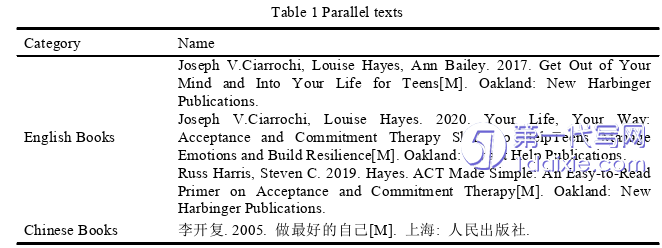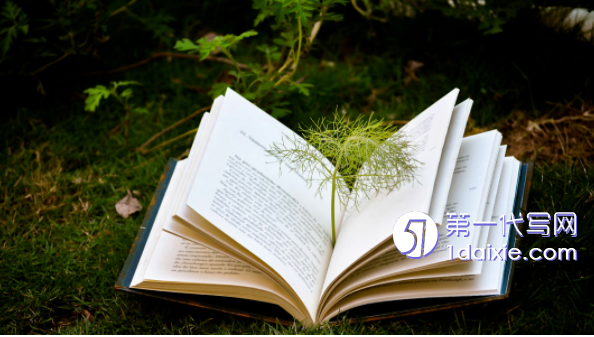本文是一篇英语毕业论文,本次翻译实践证明,语义翻译和交际翻译策略对于翻译心理学文本具有指导意义。译者基于文本类型理论对翻译实践进行总结、分析,并根据语义翻译和交际翻译策略提出相应的翻译方法,以期为日后研究翻译此类心理学文本提供借鉴和参考。
Chapter 1 Task Description
1.1 Selection of the Source Text
The book,What Makes You Stronger,is adopted as the source text.The specificreasons are as follows.
First and foremost,translation in the area of psychology is of interest to thetranslator.Not just China,but countries worldwide,have seen a huge number ofpsychological crises recently.The translator learns that mental self-help plays a moreprominent role in“self-medication”than in the treatment of other mental health problems.Therefore,people can read some books related to mental self-help to improve their abilityto solve psychological problems.Chu(2020)has said that reading can assist youngstersin improving their psychological ability for self-care and fostering the habit ofappreciating life.Thus,this material is selected as the source text.It is hoped that byreading this book,readers of the target language can be able to deal with psychologicalproblems more flexibly and learn more about psychology.
Besides,the book is not worded too hard and has many intriguing scenarios forreaders to speculate about.Its translation is passably challenging and appropriate forpractice.

1.2 Analysis of the Source Text
In this part,a brief description of What Makes You Stronger is given,including theauthor,the source text,and the literary forms of the source text.
1.2.1 Introduction to the author and source text
What Makes You Stronger is a book written by three psychologists:Louise L.Hayes,Joseph V.Ciarrochi,and Ann Bailey.They are all experienced ACT practitioners.Thisbook was first published in August 2022 by New Harbinger Publishing.
Mental self-help is a form of dealing with personal or emotional problems withoutthe help of professionals.As a result,we can refer to all products that serve this purposeas mental self-help books(Bergsma,2008).The source text is a book about mental self-help.It shows people how to build inner flexibility so that people can grow from theirstruggles.A simple,practical system built from effective research is provided in thisbook.We refer to the system as DNA-V.The DNA-V model is a method that is easy tounderstand and remember.It can be used to think about some of the core changes that areimportant for mental health.By reading this text,people can be more flexible mentallyand have a clearer understanding of their own lives.
The source text is a total of three sections,and each section is divided into severalchapters.Chapter 1 to Chapter 3 of the first part of the book is the source text of thistranslation practice report.Chapter 1 of the first part shows that valuer can direct people’slives toward purposes,Chapter 2 explains that advisor can make people’s lives moreefficient,and Chapter 3 reveals that noticer can strengthen people’s awareness.
Chapter 2 Theoretical Framework
2.1 Newmark’s Theory of Text Typology
Newmark is a famous English translation theorist.He takes the function of languageas the starting point and borrows from the linguist Karl Buhler’s linguistic functiontrichotomy and Roman Jacobson’s six functional models of language to form a set of hisown text function and classification theory(Zhang,2009).In his book A Textbook ofTranslation,he points out that according to the different text genres and contents,textscan be classified into three types:expressive texts,informative texts,and vocative texts,which is the theory of text typology.In the book About Translation,he further clarifiesthat expressive texts are about expressing the author’s personality;informational texts areabout stating objective facts;and vocative texts are about infecting the reader(Newmark,2006).
Expressive texts are texts in which the author expresses his thoughts and feelings byusing a language rich in personal style.The author and the original work are valued,andthe reader’s response is ignored(Munday,2016).Such texts often use exaggeration,metaphor,personification and other literary rhetoric methods,focusing on expressing theauthor’s thoughts,attitudes,emotions and value orientation.Informative texts are reader-centered.The translator is required to convey the information of the source language textidiomatically and smoothly according to the linguistic style and cultural connotation ofthe target language,and ultimately to achieve information equivalence.Baker(2004)hasalso said that when rendering informational texts,the translator should take the languagelevel of the target language readers as a criterion and ensure that it is easy to understandwithout being bound to the original language form.Vocative texts give priority to thereaders and focus on their reactions.Newmark(1988)has said that the core of thevocative function of language is the readership,the addressee.
2.2 Newmark’s Semantic Translation and Communicative Translation
Newmark pointed out that different text types should be translated using differentmethods.Therefore,he proposed semantic and communicative translation based on thethree text types mentioned above.
In the late 20th century,Peter Newmark published the book Approaches toTranslation,in which he first mentioned semantic translation and communicativetranslation.In semantic translation,the translator should reproduce the context of theoriginal work as accurately as the semantic and syntactic structure of the target languageallows.In communicative translation,the effect produced by the translation should be asclose as possible to the original work.And the exact contextual meaning of the originaltext is attempted to be translated.The focus of the two is different.In order to express thethinking process of the original work,the semantic translation seeks to maintain thelinguistic characteristics and unique expressions of the original work.It brings into playthe expressive function of language.While the key to communicative translation is toconvey information,and the reader needs to think,feel and act.It fulfills the function oflanguage to convey information and produce effects.If there is a conflict between thecontent and effect of the message,semantic translation focuses on content rather thaneffect.In contrast,communicative translation pays attention to effect rather than content(Liao,2004).
Chapter 3 Translation Process ............................... 7
3.1 Pre-translation Preparations ............................ 7
3.2 Translating ............................................... 9
3.3 Proofreading ..................................... 10
Chapter 4 Case Analysis ............................. 12
4.1 Semantic Translation .............................. 12
4.1.1 Annotation ........................... 12
4.1.2 Diction ............................... 14
Chapter 5 Conclusion ...................................... 29
5.1 Major Gains...................................... 29
5.2 Limitations ........................................ 30
Chapter 4 Case Analysis
4.1 Semantic Translation
Tytler(1978)has said that semantic translation focuses on the original language andits culture.It emphasizes the objective and accurate reproduction of the semantics of theoriginal text.A good translation should be faithful to the original content,possess theoriginal style and technique,and be as smooth as the original.Therefore,the annotationand diction methods are employed to render the source text under the guidance of thesemantic translation strategy.
4.1.1 Annotation
Annotation is a compensating technique that allows the translator to faithfullytranslate the original information.It is also employed as a supplemental strategy to attaintranslation equivalency when feasible.The source text contains some words such aspsychological terms,which can be obscure and difficult to understand for laymen.Therefore,the annotation method is an essential task for the translator to complete duringthe translation process if they want to ensure that readers fully comprehend the translatedcontent(Sun&Zhou,2010).

Chapter 5 Conclusion
5.1 Major Gains
By rendering the source text and writing this translation practice report,thetranslator has gained a lot.The specific experiences are as follows:
First and foremost,the translator recognizes the necessity of preliminary preparation.The preparations made by the translator in the preliminary stage mainly consist oflearning psychological background information,studying translation theories,gatheringtranslation methods as well as collecting translation tools.The translator is able tocomprehend the original text’s meaning more completely and properly than before thanksto the extensive background knowledge in psychology-related fields.Parallel texts arestudied so that the information of the original text is understood more thoroughly.Translation theories are studied and researched so that translation practice can be guidedmore scientifically.Translation tools provide more detailed help in solving the difficultiesencountered in the process of translation practice.
Secondly,the translator recognizes that Newmark’s text typology is applicable to aprimarily informative text with the characteristics of a vocative text.These two strategiesare applied to guide the translation practice.Since the source text is a mental self-helpbook,it is bound to contain information about psychology.At the same time,the bookalso carries a call to arms because its goal is to help people move forward in theirstruggles and become stronger in the face of adversity.Therefore,Newmark’s texttypology as well as his semantic and communicative translation strategies is chosen asguides.In this way,the rendition not only corresponds to the original text in terms ofconnotation but satisfies the communicative function of the original language and realizesthe effect of transmitting information.
reference(omitted)
